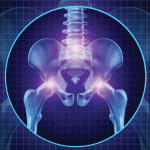The authors suggest that corticosteroid injection may provide local transient analgesia that encourages overuse while also negatively affecting collagen remodeling. This study provides convincing evidence that for this population of patients, corticosteroid injection offers no long-term clinical benefit and, in fact, clinical outcomes are worse in the long term.
It is tempting to wonder whether similar results might be observed for other common sites of injection for local joint syndromes such as anserine or trochanteric bursitis. While long-term outcomes were worse for corticosteroid injected patients in this study, there were statistically significant improvements in function at four weeks, so there may still be a role for corticosteroid injection in lateral epicondylalgia in select patients.
Lateral epicondylalgia is likely to remain frustrating to both patients and physicians, but decisions on PT and corticosteroid injection can now be made with appropriate evidence to support a clinical decision.
Dr. Sparks is a rheumatology fellow at Brigham and Women’s Hospital in Boston.
References
- Bisset L, Beller E, Jull G, Brooks P, Darnell R, Vicenzino B. Mobilisation with movement and exercise, corticosteroid injection, or wait and see for tennis elbow: Randomised trial. BMJ. 2006;333:939.
- Hay EM, Paterson SM, Lewis M, Hosie G, Croft P. Pragmatic randomised controlled trial of local corticosteroid injection and naproxen for treatment of lateral epicondylitis of elbow in primary care. BMJ. 1999;319:964-968.
- Coombes BK, Bisset L, Brooks P, Khan A, Vicenzino B. Effect of corticosteroid injection, physiotherapy, or both on clinical outcomes in patients with unilateral lateral epicondylalgia: A randomized controlled trial. JAMA. 2013;309:461-469.

